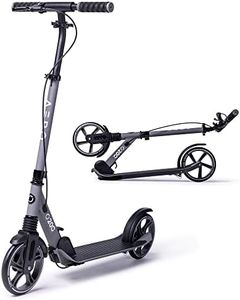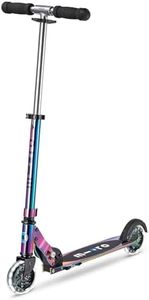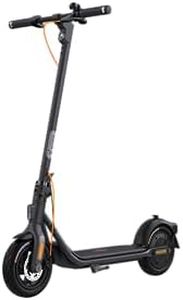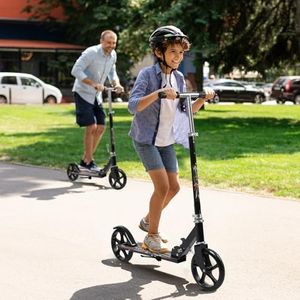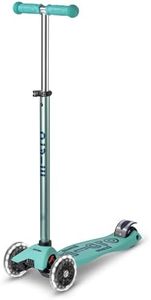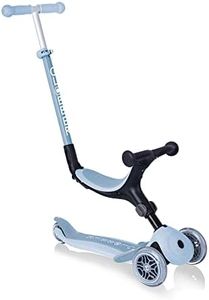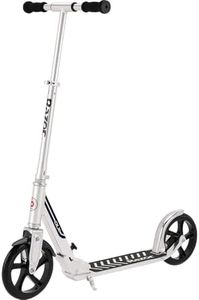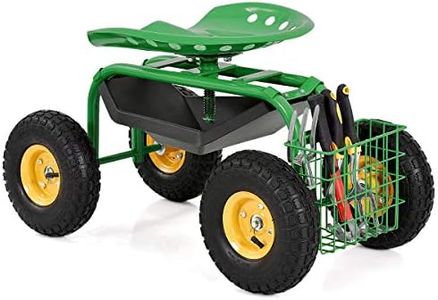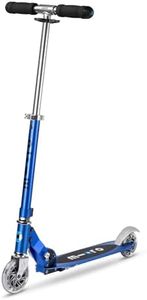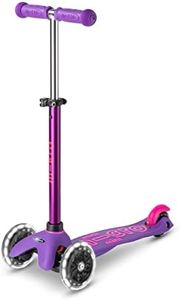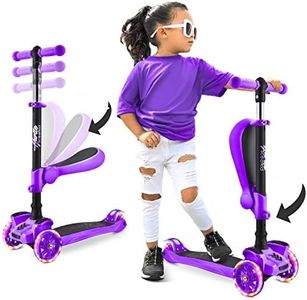We Use CookiesWe use cookies to enhance the security, performance,
functionality and for analytical and promotional activities. By continuing to browse this site you
are agreeing to our privacy policy
10 Best Garden Scooters
From leading brands and best sellers available on the web.Buying Guide for the Best Garden Scooters
Choosing a garden scooter can make your gardening tasks much easier by giving you a comfortable, mobile seat while you work around your yard. To find the best one for your needs, consider how you'll use it, where you'll use it, and the features that will help you most. Think about your own mobility requirements and the type of gardening you do, whether mainly on paved areas or across soft ground. Focus on features that provide comfort, maneuverability, and convenience to match your gardening routines.Weight CapacityWeight capacity refers to the maximum user weight the garden scooter can safely support. It's important because exceeding it can cause the scooter to break or become unsafe. Garden scooters generally fall into ranges like up to 200 lbs, 200-350 lbs, and above 350 lbs. Lighter options may suffice for smaller users, but larger users or those who want to carry tools/goods with them should pick a scooter with a higher weight capacity.
Seat Comfort and AdjustabilitySeat comfort and adjustability are crucial for long gardening sessions; they refer to how padded the seat is, whether it swivels, and if the height can be changed. Fixed, non-padded seats might cause discomfort during extended use, while padded and adjustable seats are more comfortable and can be customized to your sitting preference. If you have back or joint issues, or plan to use the scooter for long periods, prioritize models with good padding and height adjustment.
Wheel Type and SizeWheel type and size affect how easily the garden scooter moves over different surfaces. Plastic wheels are best for smooth, paved areas, while rubber or pneumatic (air-filled) tires are better for rough, soft, or uneven terrain. Smaller wheels work well on solid ground, but larger wheels handle grass, gravel, or soil better. Select the wheel type and size based on the primary surfaces in your garden to ensure smooth mobility.
Mobility/SteeringMobility or steering refers to how easily the scooter can turn and be maneuvered. Some models have fixed wheels, making them straightforward but less flexible in tight spaces, while others offer swivel or even steerable front wheels for easier navigation. If you need to move around garden beds, turn in place, or work in crowded spaces, look for a scooter with enhanced steering features.
Storage SolutionsStorage solutions include baskets, trays, or compartments attached to the scooter for carrying tools, seeds, or harvested produce. More complex scooters may have larger baskets and even covered compartments. If you like to keep your hands free and your tools close by, pick a model with practical storage options that match the amount and type of gear you typically use.
Frame Material and DurabilityThe frame material and durability determine how long the scooter will last and how much rough use it can handle. Common materials include plastic, steel, and aluminum. Plastic is lighter but less durable, whereas steel and aluminum are sturdier but can be heavier. If you're working in harsh conditions or expect to use the scooter frequently, opt for metal frames; for occasional, light use, lighter materials may suffice.
